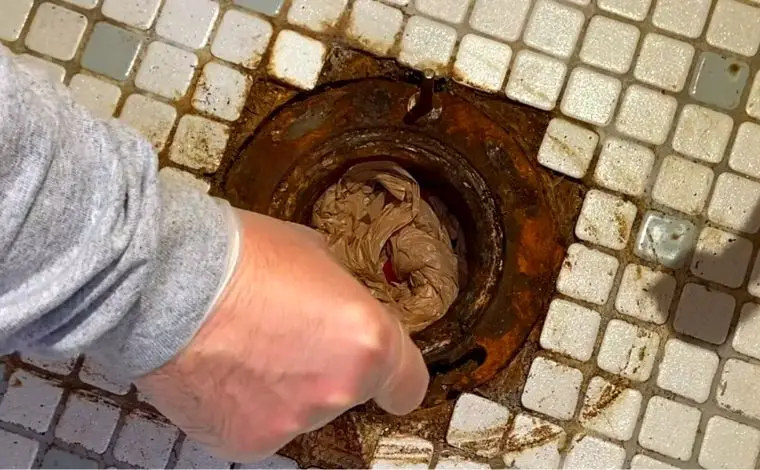The height of the toilet flange plays a vital role in ensuring your toilet remains stable, leak-free, and properly aligned with the drainage system. When a cast iron toilet flange is installed too high above the finished floor, it can create rocking, leaking, and even long-term damage to the flooring and subfloor. Many homeowners overlook this small detail during installation, only to face costly repairs later.
In this guide, you’ll learn everything about what a toilet flange is, how high it should be, the problems caused by incorrect height, and practical step-by-step methods to fix a cast iron flange that’s too high. Whether you’re a DIY homeowner or just trying to understand the basics before calling a plumber, this article will walk you through it all.
What Is a Toilet Flange?
If you’re new to plumbing or bathroom installations, the term “flange” might sound unfamiliar. A toilet flange—also called a closet flange—is a round fitting that connects the toilet base to the drainpipe in your floor. It creates a secure connection between the toilet and the home’s waste drainage system.
The flange also helps anchor the toilet to the finished floor, ensuring stability when in use. Without a properly installed flange, the toilet can rock back and forth, breaking the wax seal and causing leaks that damage the subfloor. Over time, water seeping beneath the floor can lead to mildew, mold, and rot, all of which are expensive to fix.
In older homes, toilet flanges are often made from cast iron, while modern installations typically use PVC or ABS plastic. Cast iron is extremely durable, but repairing or adjusting its height requires more care and the right tools.
Why Flange Height Matters
You might wonder why even a small height difference could matter. But in plumbing, precision counts.
When the flange sits too low, the wax ring that seals the toilet to the flange might not compress enough, leading to leaks. On the other hand, when the flange is too high, the toilet will not rest evenly on the floor. You’ll feel it rock slightly every time you sit, and eventually, the seal may break or the toilet base may crack.
A high flange can also cause improper drainage, uneven flooring contact, and potential odor leaks from sewer gases. If left unchecked, this can result in major structural issues in your bathroom.
Ideal Height for a Toilet Flange
According to most plumbing standards, the top of the toilet flange should sit about ¼ inch above the finished floor. This height ensures that when the toilet is mounted with a standard wax ring, the seal is tight and watertight.
If your flange is level with the floor, that’s still acceptable in most cases, as long as the wax ring compresses well. However, anything significantly higher—especially more than ½ inch—can lead to rocking and sealing issues.
Remember: the measurement should be taken after flooring installation (tile, vinyl, laminate, etc.), not before. Installing the flange before finishing the floor often results in misalignment later.
Signs Your Toilet Flange Is Too High
You might not immediately notice a high flange issue, but over time, several telltale signs appear:
- The toilet rocks or wobbles when you sit down.
- Water leaks appear around the toilet base after flushing.
- You notice a gap between the toilet base and the floor.
- There’s a persistent sewer smell near the toilet.
- The toilet base or flooring shows cracks due to uneven pressure.
If you’re experiencing any of these, it’s time to inspect your flange height.
How to Fix a Cast Iron Toilet Flange That’s Too High
There are several effective ways to fix this problem, depending on how high the flange is and what type of flooring or plumbing setup you have. Let’s go through the main methods step by step.
1. Raise the Bathroom Floor
If your flange is more than ½ inch too high, one option is to raise the level of your bathroom floor. This solution works well if you’re planning to remodel or replace old flooring anyway.
Steps:
First, remove the old flooring completely around the toilet area. Then, install a new subfloor layer or underlayment that matches the height difference between the flange and the floor. For example, if the flange sticks up ¾ inch too high, raise the floor by that same amount.
After raising the floor, reinstall your new surface—tile, vinyl, or laminate—and ensure the flange now sits about ¼ inch above the finished floor. This approach eliminates the height gap naturally and provides a more permanent fix.
However, keep in mind that this is a time-consuming and labor-intensive project. It’s not ideal if you just need a quick repair. In that case, consider the following methods.
2. Fill the Gap Using Grout or Mortar
If the flange is only slightly too high, you can fill the gap between the toilet base and floor using grout or thin-set mortar. This stabilizes the toilet and prevents it from rocking.
Steps:
Start by dry-fitting the toilet over the flange and inserting rubber shims evenly around the base to make it sit level. Once balanced, remove the toilet and prepare your grout mixture according to the manufacturer’s instructions.
Place the toilet back on the flange with the shims in position, then apply the grout mixture around the base to fill all visible gaps. Allow it to dry for at least 24 hours. Once the grout is cured, remove the shims and tighten the toilet bolts carefully.
This method is a fast, inexpensive fix that helps stabilize a rocking toilet caused by a high flange. However, it doesn’t lower the flange itself—it just evens out the contact between the toilet and the floor.
3. Replace or Reinstall the Flange
When the flange sits too high above the floor, replacing it is often the most professional and long-lasting solution. This is especially true for cast iron flanges, which can be tricky to adjust.
Steps:
-
Shut off the water supply to the toilet.
-
Flush the toilet to empty the tank and bowl.
-
Disconnect the water line and remove the toilet by unscrewing the bolts.
-
Inspect the flange carefully. If it’s cracked, rusted, or improperly installed, replacement is the best option.
-
Use a flange removal tool or metal cutter to cut away the old flange. Be careful not to damage the drainpipe beneath it.
-
Clean the pipe opening and install a new cast iron or PVC replacement flange using proper fittings and screws.
-
Ensure the new flange sits ¼ inch above the finished floor before securing it.
-
Reinstall the toilet with a new wax ring and tighten the bolts evenly.
This process takes a bit of plumbing knowledge, so if you’re not comfortable cutting cast iron, it’s best to hire a licensed plumber. They have specialized tools (like an angle grinder or flange repair kit) to get the job done safely.
Adjusting the Height of a Cast Iron Flange Without Full Replacement
Sometimes, you don’t need to remove the flange completely. You can modify its height with some careful work. Here are two reliable methods:
Method 1: Cut Off the Excess Portion
If the flange is just slightly too high, you can cut off the upper lip to bring it down to the proper height. Here’s how:
-
Turn off the water supply and remove the toilet.
-
Use a metal-cutting saw or rotary tool to trim the upper section of the cast iron flange carefully.
-
Smooth the edges with a file to avoid sharp metal fragments.
-
Test-fit the toilet to ensure it now sits level with the floor.
This method works well if only a small adjustment (⅛ to ¼ inch) is needed. Be patient and wear safety gear since cutting metal creates sparks and sharp debris.
Method 2: Add Support Beneath the Flange
If removing or cutting the flange isn’t feasible, another creative fix is to support it from below.
After removing the toilet, cut a few small pieces of wood or PVC shims equal to the height difference needed. Place these under the flange ring to provide extra support, ensuring the flange doesn’t rock. Once secured, reattach the toilet and test for leaks.
While this method can work in emergencies, it’s more of a temporary fix. For long-term reliability, consider a full flange adjustment or replacement.
How to Remove an Old Cast Iron Toilet Flange
Removing a cast iron flange requires more effort than removing a modern PVC one because of how it’s sealed with lead and oakum. But with patience, you can do it safely.
Here’s how:
-
Turn off the water supply and drain the toilet completely.
-
Unscrew the bolts holding the toilet to the flange and lift the toilet off.
-
Use a wrench to loosen the flange bolts and a screwdriver or pliers to pry it loose.
-
If it’s stuck, heat the joint slightly with a heat gun to soften the lead seal (never use an open flame).
-
Once loosened, pull out the flange from the pipe.
-
Clean the drain opening thoroughly before installing a new flange.
-
Install the new flange at the proper height using screws and tighten securely.
-
Reattach the toilet, ensuring a snug fit with a new wax seal.
If your flange is severely rusted or corroded, it’s safer to call a plumber. They can use specialized tools like a flange puller or inside pipe cutter to remove it cleanly without damaging the main drainpipe.
Preventing Toilet Flange Height Problems in the Future
Once you’ve fixed the issue, it’s smart to prevent it from happening again. Here are a few practical tips:
-
Always install or check the flange after the finished flooring is in place.
-
Measure the flange height with a straightedge or level before placing the toilet.
-
Use the right wax ring thickness—standard, extra-thick, or double if needed.
-
Never stack multiple wax rings unless recommended; instead, fix the flange height itself.
-
Periodically check for leaks or rocking and tighten bolts gently.
By taking these small preventive measures, you can avoid expensive repairs and ensure your toilet remains stable for many years.
Video Guide: Installing a New Cast Iron Toilet Flange
If you prefer visual learning, you can find many helpful videos online demonstrating how to cut, remove, or install a new cast iron toilet flange. Watching professionals work can give you confidence before attempting the repair yourself.
Final Thoughts
When the toilet flange sits too high, it might not seem like a major issue—but over time, it can lead to significant water damage and costly floor repairs. Ensuring your flange height is correct from the start—or fixing it promptly when it’s not—will save you from long-term frustration.
The ideal toilet flange height is ¼ inch above the finished floor. If yours is higher, you can solve it by raising the floor, using grout for leveling, or replacing or trimming the flange. Each method depends on your skill level, the severity of the problem, and the tools available.
If you’re uncertain or dealing with an older cast iron setup, hiring a professional plumber is always the safest bet. They’ll ensure the job is done right, keeping your bathroom leak-free, sturdy, and clean for years to come.
Hi, this is Robert Crossan, the owner of this website, has 17 years of experience in the installation, maintenance, and repair of toilets and plumbing systems. After completing the Level 2 Basic Plumbing course in 2005, I started working in both domestic and commercial buildings as a professional plumber. So I can figure out the core difference between different toilet models and brands. It also helped me monitor their work performance and setbacks.